Exploring Asheboro’s Natural Habitat Zoo
August 1, 2019

~~~
Story and photos by team member Jonathan E.
~
Almost exactly halfway between the state’s largest city, Charlotte, and its capital, Raleigh, you’ll find the North Carolina Zoo in Asheboro. The not-so-convenient location is a worthy trade-off for the sizable land area it affords; the Zoo claims that “with 500 developed acres, it is the world’s largest natural habitat zoo.”
The “natural habitat” setup has its pros and cons, but on the whole, I’ve found it preferable to what you might find in a smaller municipal zoo. Yes, larger exhibits mean that sometimes the animals will be farther away from you, behind trees or other exhibit features, etc., but it also means they have more space to move around and interact within their natural environments, which makes for more interesting viewing. I would think this setup is better for the animals, too, than the sometimes seemingly-cramped exhibits at some other zoos I’ve visited. Here’s a good example of how large the exhibits can be here:

The Zoo is broken up into two halves, North America and Africa, with entrances/ticket booths at either end. I started out with a tram ride from the North America entrance to Junction Plaza, the main waypoint between the two sides, to buy a Zoofari ticket for later in the day (more to come on that later!) before starting the Africa loop. This side has all the standbys you would expect, including gorillas, lions, zebras, and elephants.

Also on the loop are red river hogs, lemurs, baboons, and ostriches, whose smaller size provide the variety needed to break up the sense of awe from the more massive animals.
Coming back up the loop towards Junction Plaza, you come to the Watani Grasslands Reserve, the Zoo’s largest exhibit, at almost 40 acres. This wide-open area houses rhinos, various types of antelope and gazelles, and more ostriches. You get a stunning view from several overlooks, but if you want to get up close and personal to these animals and learn a bit more about them from a zoo staffer, here’s where the Zoofari ticket I mentioned earlier comes in handy.
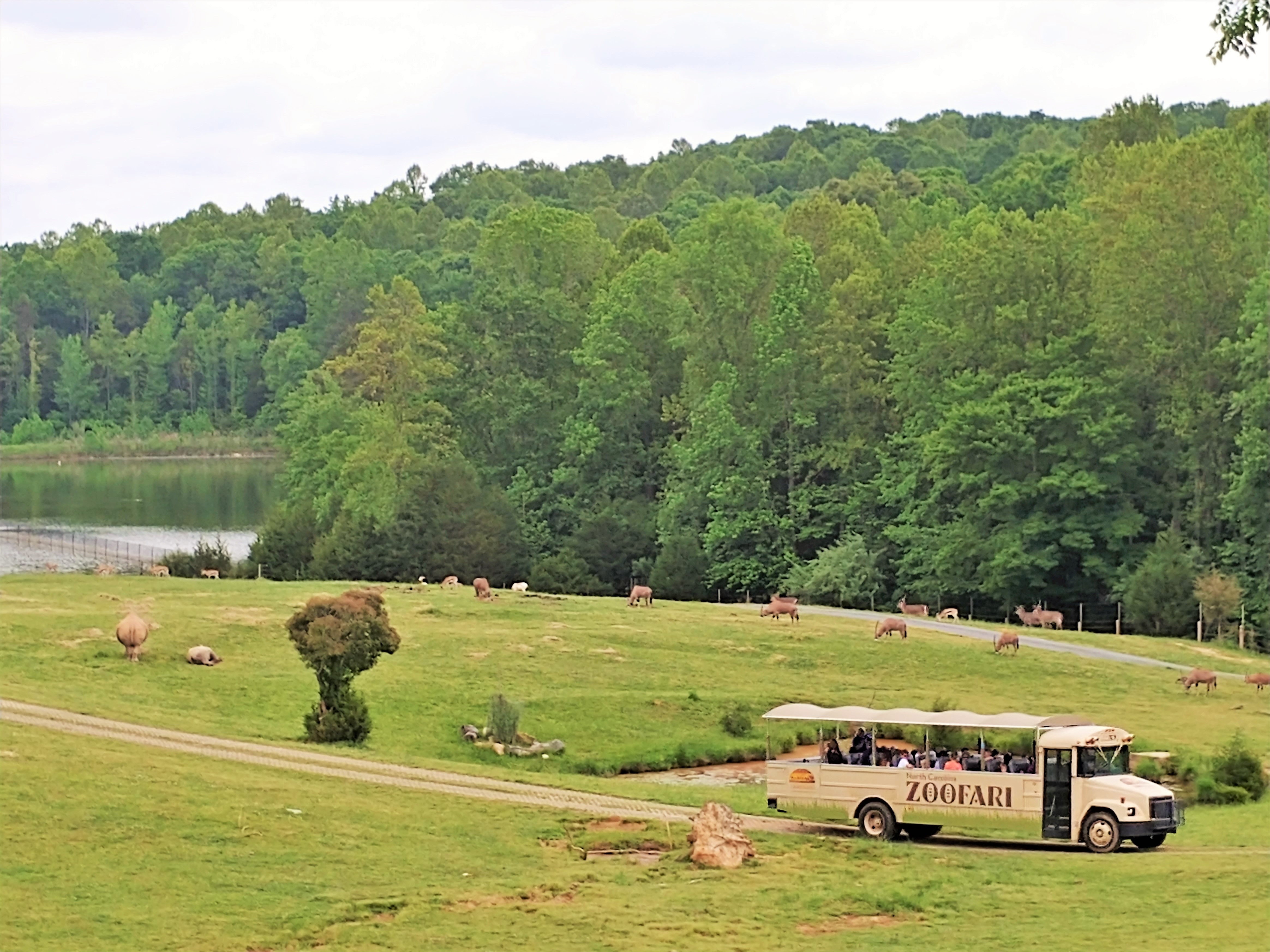
On your Zoofari, you ride an open-sided, re-purposed school bus around the Watani Grasslands exhibit, stopping as you approach each animal or herd to hear information about it from your guide. I thought this experience was worth its $25 cost for just me, but I’m not sure I’d feel the same way if I was paying for multiple tickets, i.e. for a family. There is a decent bit of waiting around before you get started, too, so younger kids might not feel the payoff is worth the patience.
You do get the chance to get some great photos, though, especially if the ostriches are feeling as inquisitive as this one!

A cheaper attraction on the Africa side – at just $3 per ticket – is the Acacia Station Giraffe Deck. Here, you are given lettuce leaves to break off and feed to the giraffes out of your hand (if they’re at the deck at that time – again, it’s a “natural habitat” zoo!).
For anyone who wouldn’t want to feed them or for kids that might be too nervous to, I’d still highly recommend getting this ticket simply to see the giraffes this close. It’s the closest you can get to any animal at the Zoo, and it’s only $3!
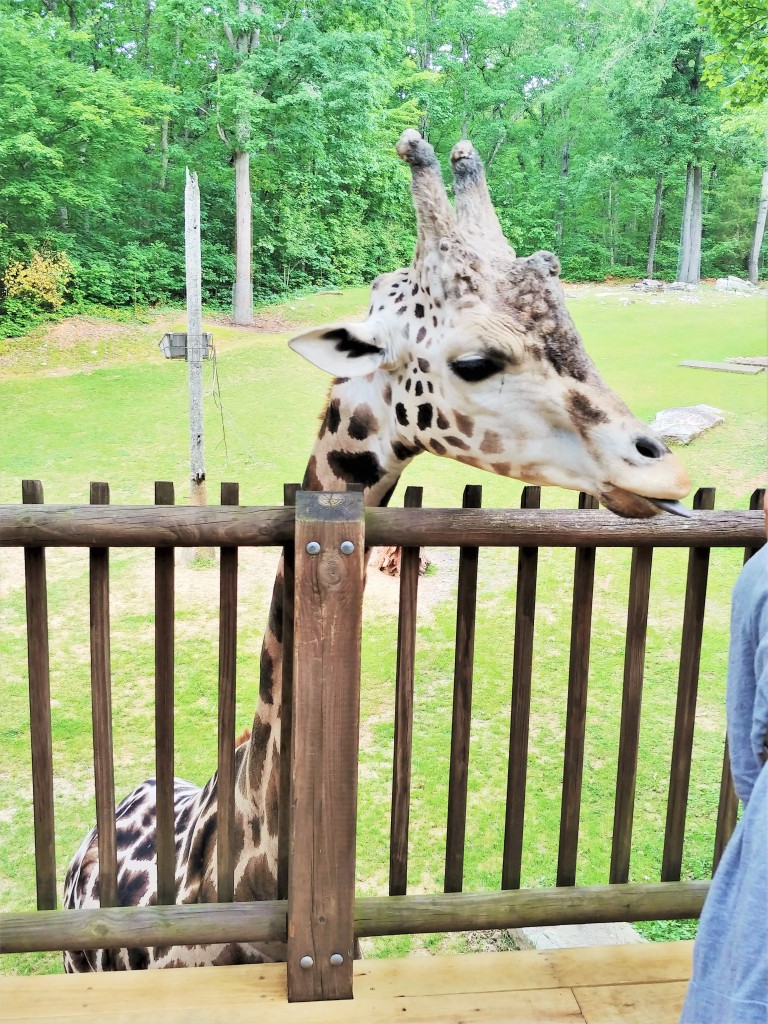
Flanking Junction Plaza on the Africa side is an aviary, included with your Zoo admission. There’s plenty of tropical birds in here if you have the time and keen eye to pick them out from among the also-interesting plants and flowers.



After stopping for some expectedly-high-priced pizza for lunch at Junction Plaza, I started down the North America path – a straight shot this time, not a loop. The aviary’s counterpart on this side is a desert dome featuring lizards, tortoises, cacti, and a porcupine. There’s pretty cool stuff in here, but it is a bit of a visual let-down if you come straight from the vibrancy of the aviary; maybe doing them in reverse order from what I did would be the way to go…
Also on the North America side are ocelots, red wolves, grizzly and black bears, and another sizeable exhibit, the Prairie, with elk and bison. Since I had walked the Africa side first, I didn’t get over to North America until the heat of the day, so the bears and bison were not active and were hiding in the shade; still impressive, but not all that interesting (or good for photos).
You then come to Streamside, a collection of otters, fish, snakes, bobcats, and a few other animals you might find in the nearby Appalachian Mountains.
The real highlight of the North America side is the Rocky Coast and its polar bear exhibit. You can see the polar bear swimming around from multiple perspectives, including at and under the water level! You can see harbor seals and sea lions the same way one tank over. Other interesting finds in the Rocky Coast are puffins and arctic foxes.



North America rounds out with a swamp environment featuring cougars, alligators, and turtles. Finally, you come to a small marsh/pond that gives a nice view on your way out or a nice welcome, depending on which way you walk through the zoo.

A few final tips:
- The various attractions are offered only at certain times of day, and the Zoofari runs only on specific days of the week. The Zoo hours and some exhibits are also seasonal, so make sure to check into what you want to see and do so you can plan your day accordingly.
- Be prepared to walk – a lot! Definitely wear sneakers. If you think you’ll only be up for one of the two sides, Africa would be my choice. That being said, I think the Rocky Coast would be worth the free tram ride even if you don’t see anything else in North America.
~~~
~
For more photos of the area and our adventures and travels,
check out our Instagram gallary @
https://www.instagram.com/yadkinvalleyhome/
~~~
The Simple Beauty of Pawleys Island
July 19, 2019
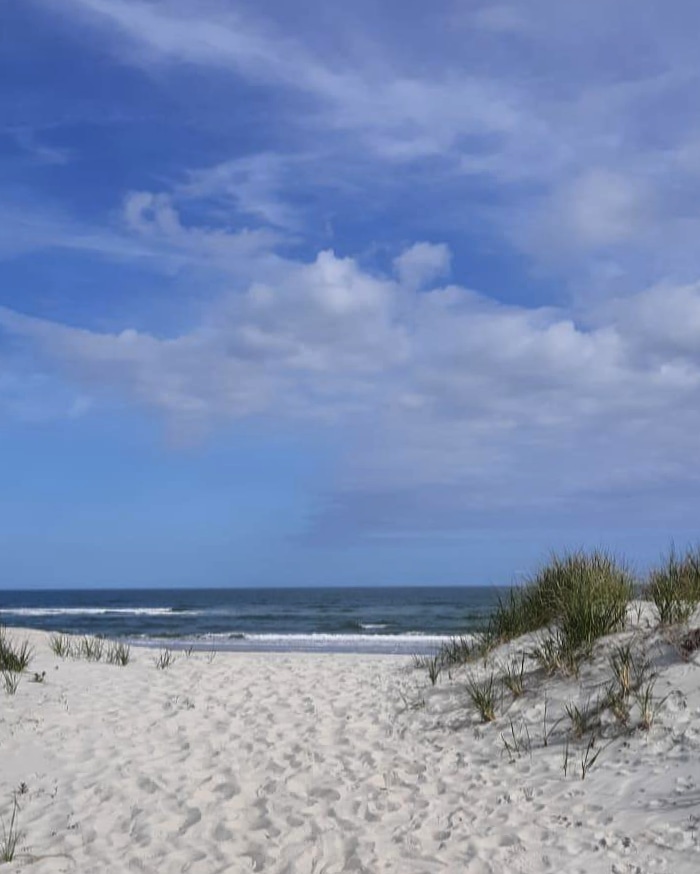
Pawleys Island is a thin, barrier island on the South Carolina coast. It’s barely a quarter of a mile wide in spots. The island lies along the northern coast of South Carolina that curves inward forming Long Bay. The curved shape of the bay and Pawleys Island’s famous hammocks give the island the nickname “The Hammock Coast”.
Pawleys Island is bordered by two inlets, Midway Inlet to the north and Pawleys Inlet to the south. Instead of a sound, the influx of water from these two inlets creates a slender, salt-water creek called Pawleys Creek. Marsh grasses line this tidal creek, with a navigable portion on each end for very small boats and kayaks.



We’ve kayaked the southern portion with friends, paddling down to the tip, beaching the boats for an hour to walk the shoreline and search the tidal pools for shells and treasures, and then riding the incoming tide back to the boat launch.

We’ve also done a little kayak fishing on the northern end in Midway Inlet. While getting out of the kayak, I realized there was a flounder on my rod. That was a nice surprise, especially when locals sitting on their porch gave a round of applause!
~~~
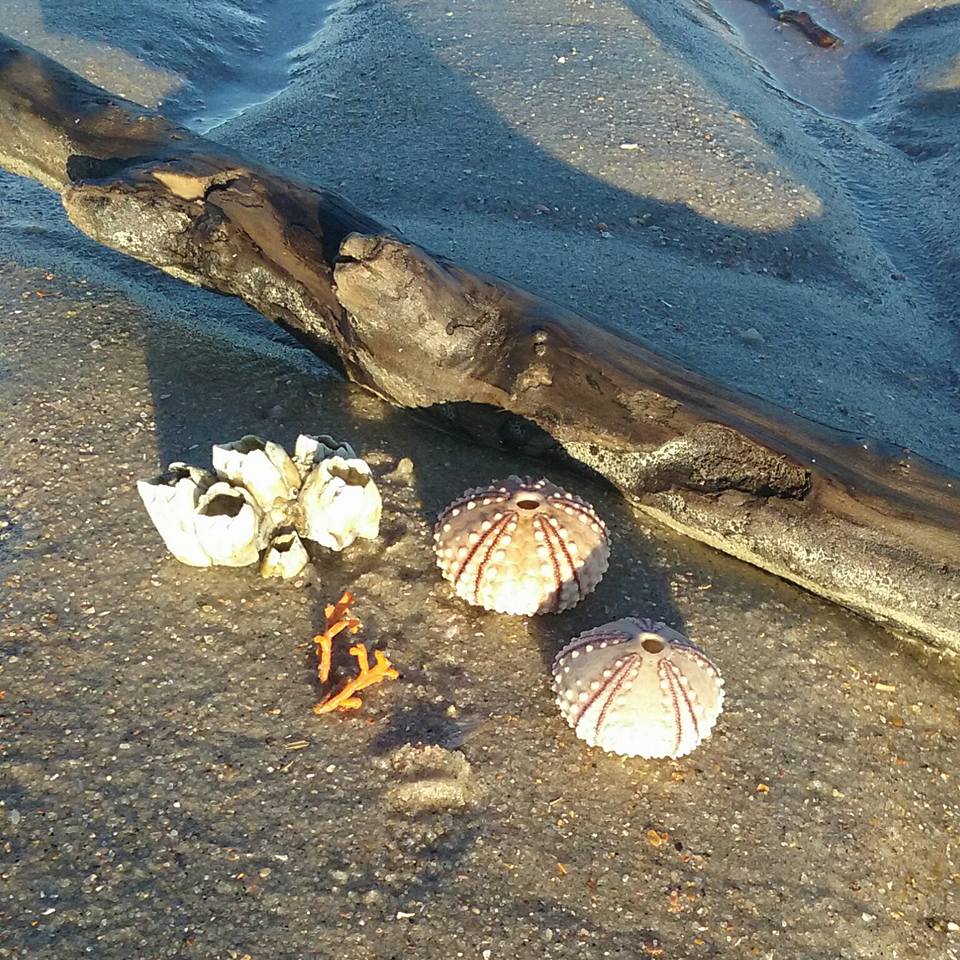
The simple beauty of Pawleys remains because there is no commercialization on the island. There are two inns, which occupy historic homes or lodges, and one quaint, little chapel local photographers adore. It’s a quiet, peaceful island sanctuary with a few beach accesses for those of us not fortunate enough to live there. Several homes are available for vacation rentals so we can all get a taste of a South Carolina paradise!
For more photos of the area and our adventures and travels,
check out our Instagram gallary @
https://www.instagram.com/yadkinvalleyhome/
~~~
Paddling the South Strand
July 13, 2019
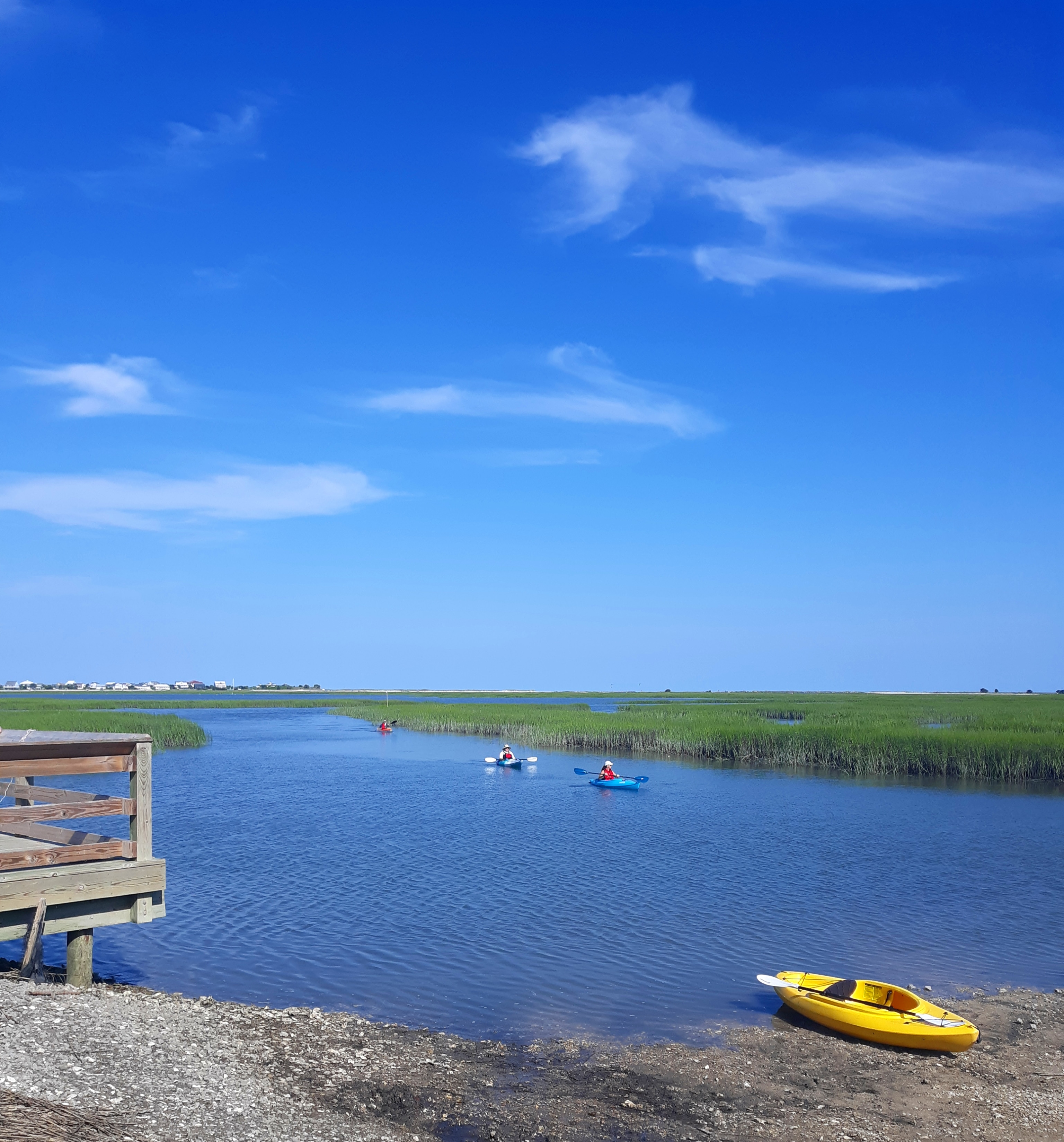
There’s lots of shallow landings along Murrell’s Inlet and Pawleys Creek to put a kayak or small boat into the creeks to paddle the marshlands.
Whether you want to fish, paddle around the marsh, or get an up-close view of the wildlife, we have plenty of opportunities here on the Southern Strand. Murrell’s Inlet is just south of the Myrtle Beach area, and Pawleys Island is about 20 minutes further south.
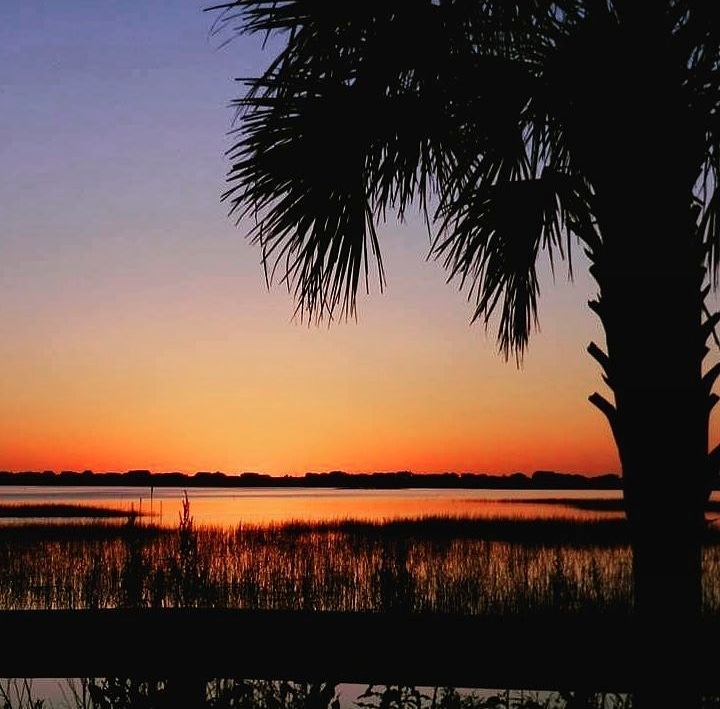
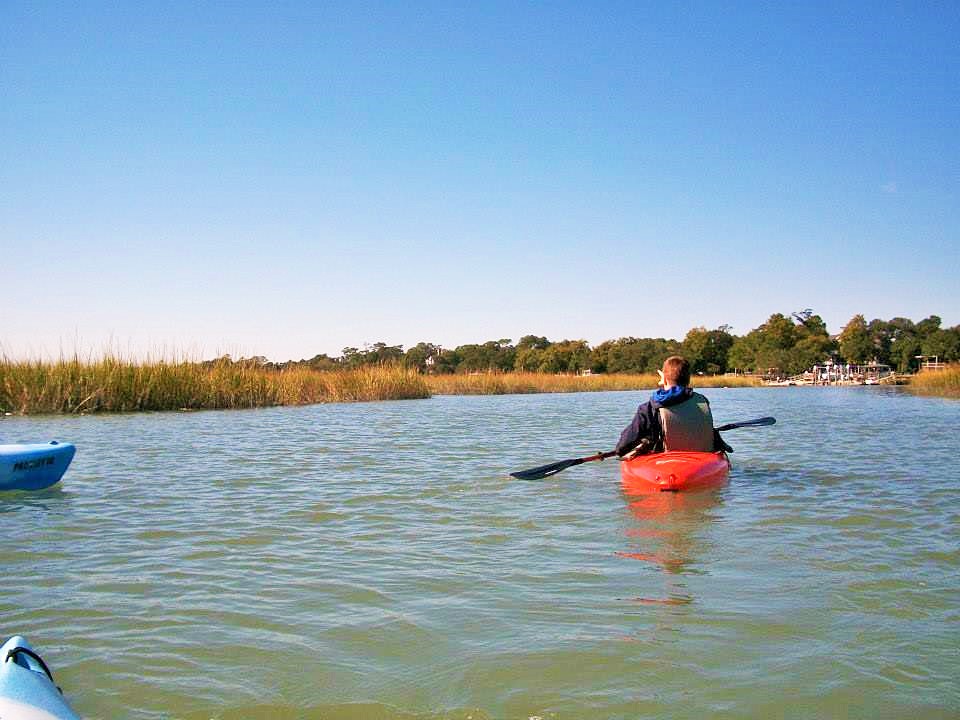
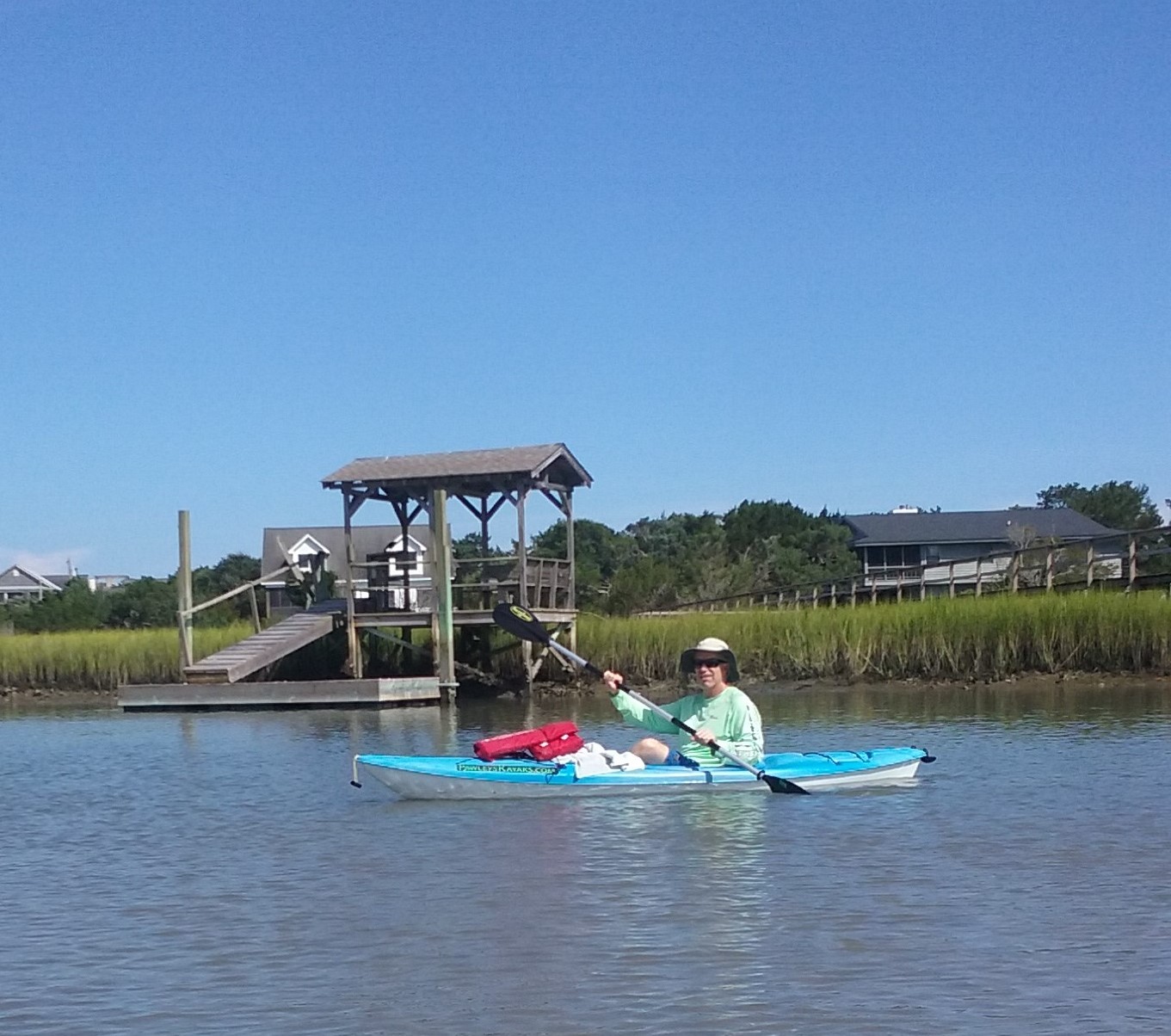
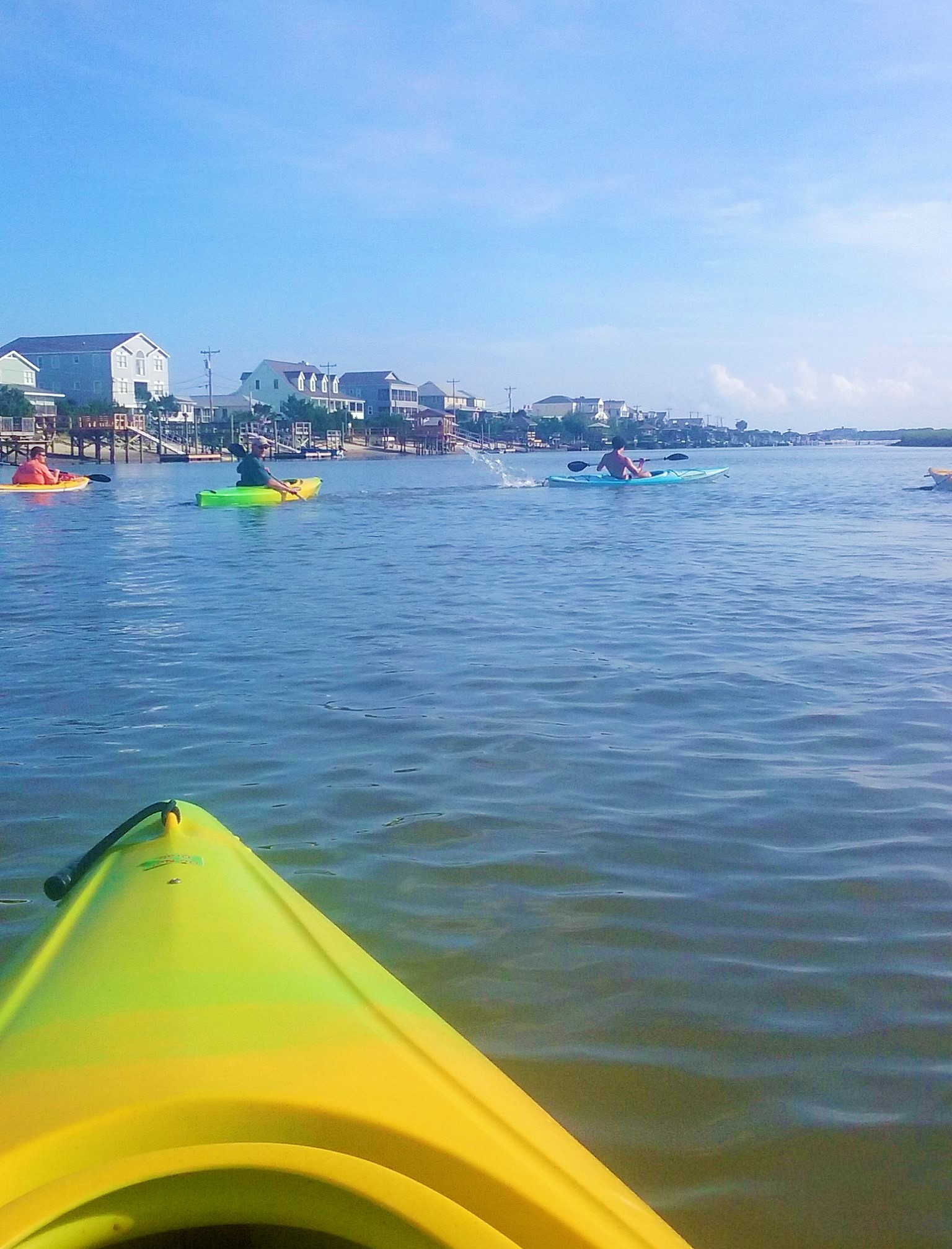
Here are a few of the landings we have used or visited:
Morse Park Landing off Hwy 17-Bus in southern Murrell’s Inlet, (top photo and sunrise photo above). Morse Park Landing is a small park with limited parking. There is no access here at or near low tide. You can see the jetties in the view from the dock beside the palm trees. There is also a beautiful memorial to the fishermen and women who have been lost at sea from the area.
The Oyster Recycling Road Boat Launch just south of Murrell’s Inlet on Hwy 17 is part of Huntington Beach State Park. At the end of a narrow road, the landing opens up to a peaceful section of the inlet and state park area. Free access while the gate is open, which is usually from dawn to dusk. Paddling to the right will take you right up to the state park walkways, depending on the tide. Lots of fishing going on from here.
Pawleys Island Boat Launches To the North – there are two areas to the north of the causeways into Pawleys Island with parking where kayaks can be launched into Pawleys Creek. The 3rd Street boat launch is on the left, heading north on Myrtle Avenue. The northern most is the last short street on the left off of Atlantic Avenue, with parking on the street. There is a beach access to the right. All vehicles must be parked behind the marked lines on Pawleys Island.
To the South – Driving south of the causeways onto Pawleys Island, there is a boat launch to the right on Pritchard Street with marked parking spaces. There is also a whole parking lot on the very southern end of the island with free parking (as of now), but no parking for trailers.

There are several local companies who will drop off kayaks, SUP boards, and small boats for half-day and full-day rentals.
We have used Pawleys Kayaks several times while paddling with friends or fishing for the day on Pawleys Island. They drop off and pick up right on the island. It’s super convenient and makes for a great beach date.
~~~
For more photos of the area and our adventures and travels,
check out our Instagram gallary @
https://www.instagram.com/yadkinvalleyhome/
~~~
July 4th Boat Parade in Murrell’s Inlet
July 2, 2019

For a fun taste of Low Country Living, Murrell’s Inlet and Garden City offer an annual Fourth of July Boat Parade.
Decorated boats line up at high tide at the southern tip of Garden City and cruise down Murrell’s Inlet. Docks along the inlet are decked out in flags and all things red, white, and blue to put everyone in a patriotic spirit.
Kids shoot water cannons at the boats as they pass. Everyone waves flags and cheers at the boats as they sail down the inlet.
The marsh is a beautiful setting to see everyone celebrate freedom!!
This year’s celebration begins around 9:00 am, according to the official Murrell’s Inlet Boat Parade Facebook page, found at this link:
https://www.facebook.com/MurrellsInletBoatParade/
Great places to see the boats go by are along the Murrell’s Inlet Marshwalk, Morse Park Landing, and the Belin Methodist Church area. Nance’s Restaurant has a nice area at the back of their parking lot to view the marsh if it’s still allowed.
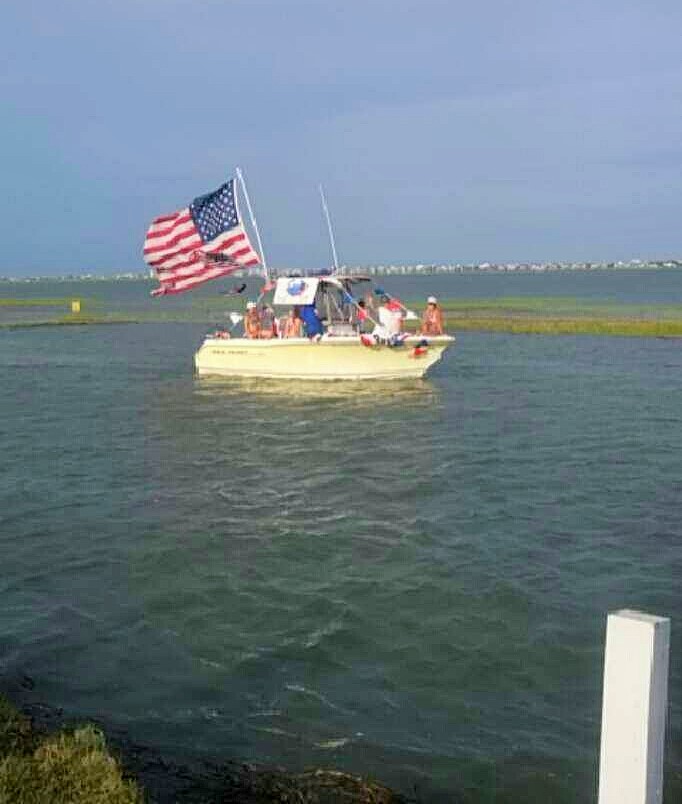

For more Low Country Living photos,
check out our Instgram gallery @
https://www.instagram.com/yadkinvalleyhome/
~~~~~
Waterlilies at the Garden
June 7, 2019

Found the perfect spot
to sit and ponder.
~~~
Water lillies, Spanish moss and beautiful sculptures make for a serene, contemplative walk through the gardens this time of year.
~
Brookgreen Gardens in Murrell’s Inlet, South Carolina
~~~
~
For more photos of the area, click here: https://www.instagram.com/yadkinvalleyhome/
True Fall came today
October 18, 2018

Living in the Low Country of South Carolina
and working from home, the transition
into Fall seems to be the most notable for me.
The day when a beach bum has to put on long pants
marks the true end of Summer.
~~~~~
This is Campbell’s Covered Bridge in Landrum, SC.
It’s the only remaining covered bridge in the state.
The grounds surrounding the bridge are a
county park where you can picnic
or go wading in the stream.
~~~
October has been very warm this year
and we’ve had no change of color in the trees yet.
~
Happy Fall!!
Summer Flowers
July 28, 2018

Pretty, pink flowers
in the Low Country
Of South Carolina today.
~~~
~
Sunrise at the Jetty
December 15, 2017

An added bonus of getting up early
to go fishing off the Jetty
in Murrell’s Inlet, SC.
~~~
~
Shrimp boats on the Sampit River
September 29, 2017
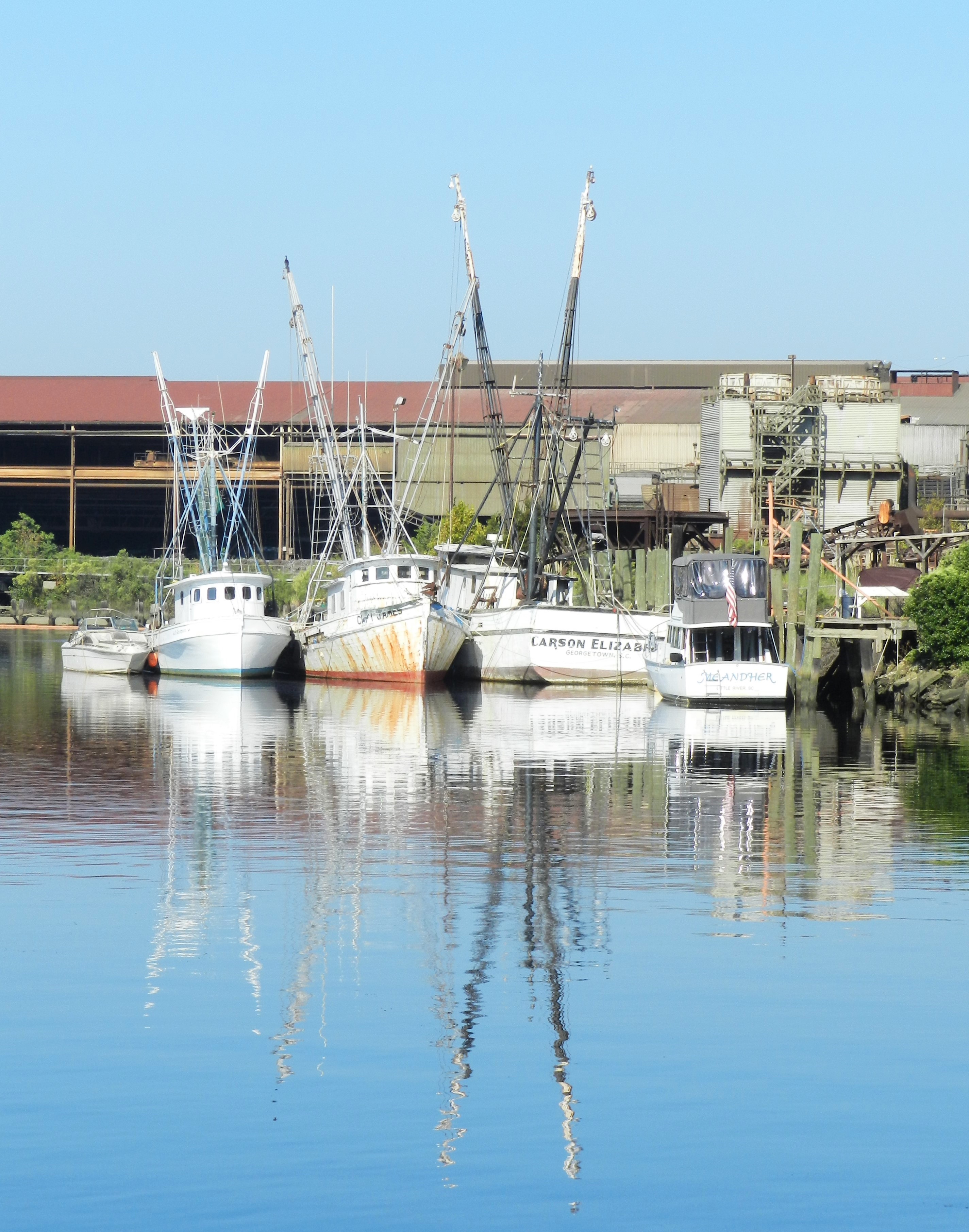
Shrimp boats and an old steel mill
on the Sampit River
in Georgetown, SC.
Tennessee River
August 4, 2017
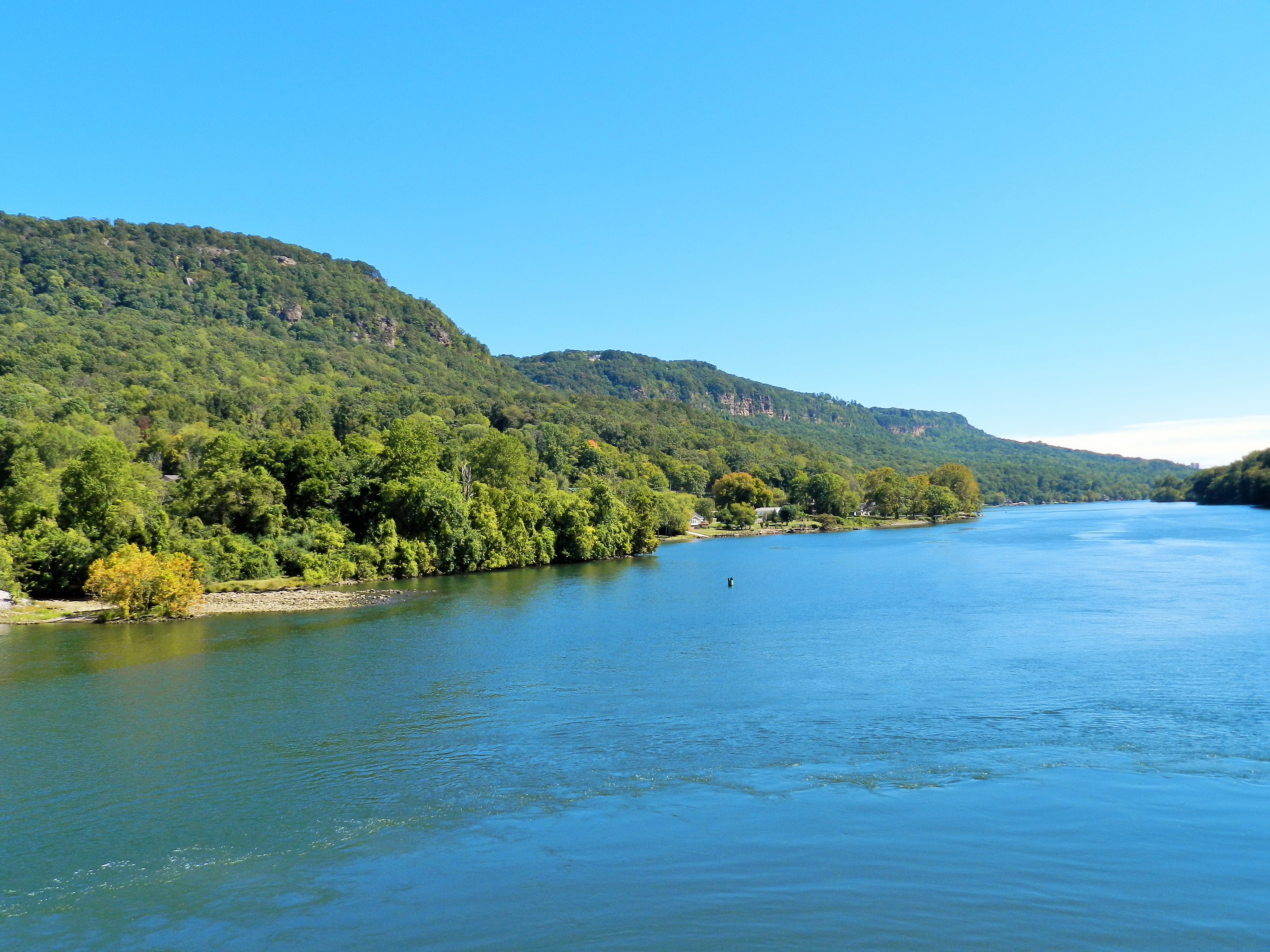
Cruising the Tennessee River
aboard the Southern Belle Riverboat
through Chattanooga, Tennessee.
~~~~~
~~~


